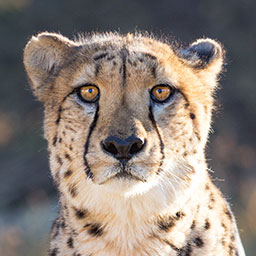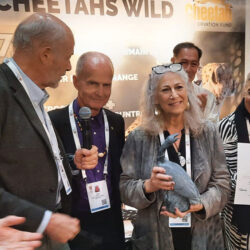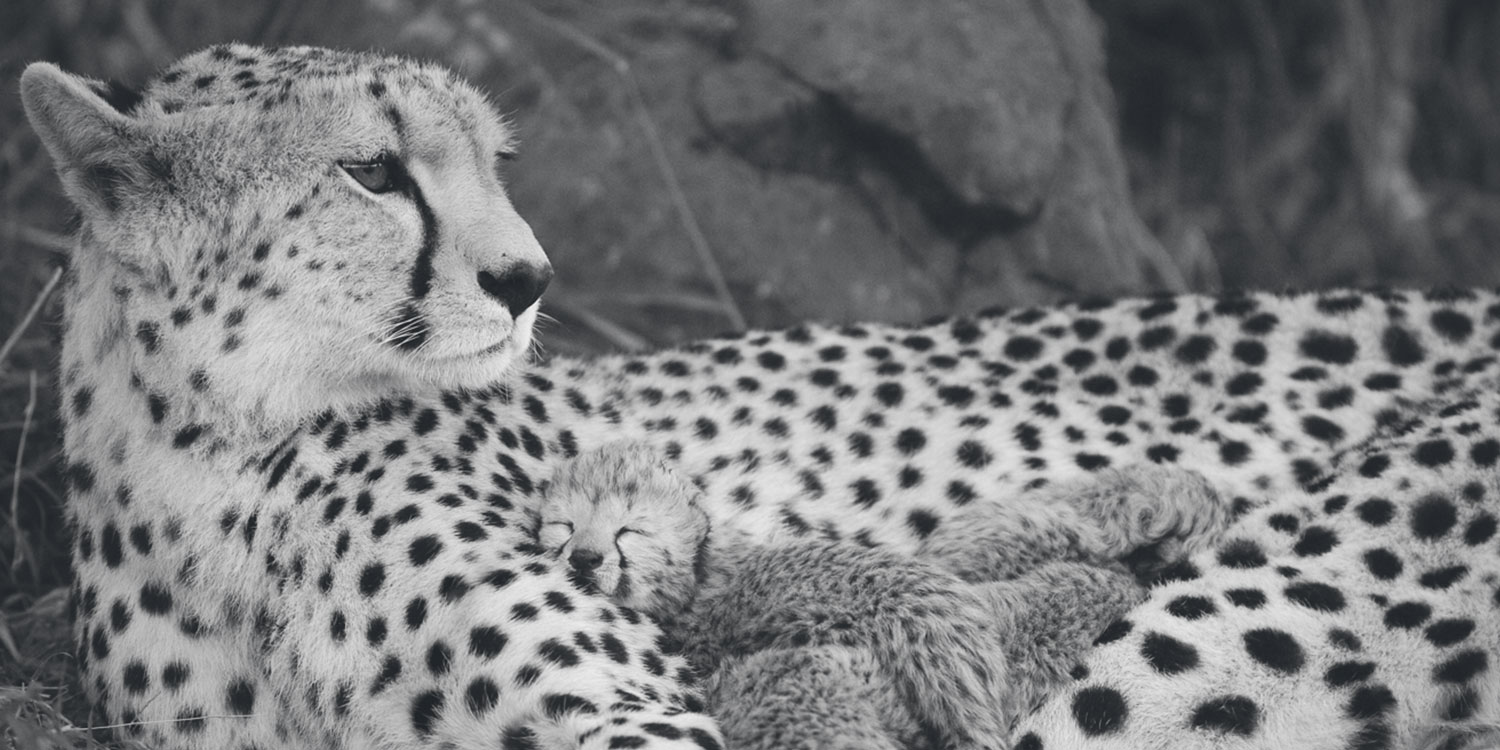Reducing Predator Conflict During Calving Season
-

- by CCF Staff November 25, 2014
FOR IMMEDIATE RELEASE
Contact: Dr. Laurie Marker
Cheetah Conservation Fund, Founder and CEO
067 306225 or 081 1247887 or [email protected]
Reducing Predator Conflict During Calving Season
OTJIWARANGO, Namibia (Nov 25, 2014) – This time of the year marks the summer calving season on Namibian farmlands. Unfortunately, each year some farmers lose calves and smallstock to a variety of predator species that share these farmlands, including jackal, caracal, cheetah and leopard.
“The Cheetah Conservation Fund (CCF) has been working with the farming community for more than 20 years assisting farmers to reduce predator and livestock conflict. Over the years CCF staff has interviewed hundreds of Namibian farmers, many of whom have found that livestock losses can be reduced by incorporating simple management techniques into their farming practices. Many of these farmers indicate that not only the cheetah, but other predators are no longer a problem when they employ non-lethal predator control techniques. The following management suggestions to reduce livestock loss have been shared with CCF by the farming community. Many farmers working with CCF are also willing to discuss various management techniques that have helped them reduce losses thus reducing the need to remove predators from the farmlands.
Often, high losses occur during the beginning of the calving season, especially in the heifer herds, during calving. Heifers, giving birth for the first time are often inexperienced and experience birthing problems. This can result in weakened calves, which makes them easy prey for a predators. Additionally, heifers are inexperienced at protecting their offspring from predators, making their calves are more vulnerable to attack. In addition making sure that there is sufficient wildlife on the farms to provide natural prey for predators, farmers recommend the following to reduce losses:
- Observe heifers closely. Bring them closer to the homestead during calving time. By doing so, assistance can be more easily provided if birthing is difficult.
- Keeping a few older, experienced cows in the heifer herd, as the older cows will protect the calves and help teach the heifers.
Keeping a female donkey and her foal in with the calving herd. Donkeys are fierce protectors and are aggressive to intruders. They will chase away dogs, jackal and cheetah. This technique works best if the donkey has bonded to the herd, so the sooner the donkey can be placed with the calving heard, the better. - Keeping a few cows or oxen with horns in the calving herd to help protect calves, as they can use their horns aggressively towards predators.
- Keep cows and calves closer to the homestead for up to one month after birth. This may be problematic due to limited grazing. Therefore, maintaining grazing in closer camps for calving times can be beneficial in the long run. If calving herds are deeper in the veld, stationing a farm worker in the same area to monitor the herd is important.
- Culling cows that continue to lose calves. Often the same cow is losing its calves to predators.
- Keeping high concentrations of cattle in camps. Rapidly rotating cattle through camps helps reduce losses. This system mimics the natural cycle of large migrating herds of game species (ie. wildebeest). This also brings together high numbers of cows with calves all of which are protective, thus increasing the level of protection for all the calves.
- Keeping calving cows out of camps with high densities of aardvark holes, as calves are known to fall into these holes, and predators are often mistakenly blamed for the loss.
- Keeping small calves out of camps with cheetah “playtrees” or territorial marking trees, as cheetahs frequent these areas due to their social behaviour.
- Raise aggressive breeds of cattle such as Brahman, Afrikaner, Nuguni, or a hybrid using one of these breeds.
Encourage high numbers and a variety of species of wild game on the farm because predators prefer natural prey. Livestock losses to predators are higher where natural prey is scarce. - Avoid killing a female predator with young cubs, as these young cubs will not be able to kill wild prey independently and will look for easier animals to hunt, such as unattended livestock.
- Do not remove non-problem predators, as they are holding down their territories. Once an animal is removed, a vacuum is created and many other animals will come to the area to claim the territory. It is best to get to know the predators on your land and use preventative livestock management methods instead of removal or lethal force against predators to manage livestock.
Loss of smallstock due to predators can also be reduced by adapting these same techniques. Farmers that employ herders to protect smallstock (sheep and goats) have fewer problems. Kraaling herds at night, having lambing camps close to the home instead of in the veld, keeping a kraals light at night and maintaining smallstock in kraals near the house have all proven to reduce losses.
In addition, CCF promotes the use of specialised breeds of Livestock Guarding Dogs (Kangal and Anatolian Shepherds) to guard smallstock. Farms that employ one of these guarding dogs have significantly reduced their smallstock losses. Guarding dogs protect flocks by barking loudly and patrolling their area; they do not herd flocks. Predators will avoid an area patrolled by guarding dogs.
If you are having predator problems and would like more detailed information, please contact CCF at 067 – 306225
Editors Notes
The Cheetah Conservation Fund is a field research and education facility that is open to the public every day from 9a.m. to 5p.m. (closed on Christmas Day). CCF welcomes day visitors during the summer holidays. CCF is located three hours from Windhoek, 30 minutes outside of Otjiwarongo.
The Cheetah Conservation Fund is a Namibian non-profit trust dedicated to the long-term survival of the cheetah and its ecosystem. The Fund’s activities include research on cheetah demographics, ecology, biology, human impacts affecting its survival, non-lethal predator control methods and education. It actively works with Namibian farmers, schools and communities, and conducts international research on cheetah demographics, ecology, biology and the human impacts affecting cheetah survival.
The International Cheetah Day is recognized on 4 December. For more information about International Cheetah Day, please visit CCF’s website, http://cheetah.org/event/international-cheetah-day-2/
Namibia is considered the Cheetah Capitol of the World. There are less than 10,000 wild cheetahs remaining in the world. Namibia protects one-third of the world’s remaining wild cheetahs.
If you would like more information on CCF’s research and education, please contact CCF at: PO Box 1755 Otjiwarongo. Tel: (067) 306225; Fax 067 306247.
For more information about Dr. Marker or Cheetah Conservation Fund, please visit www.cheetah.org.
Related Reading


